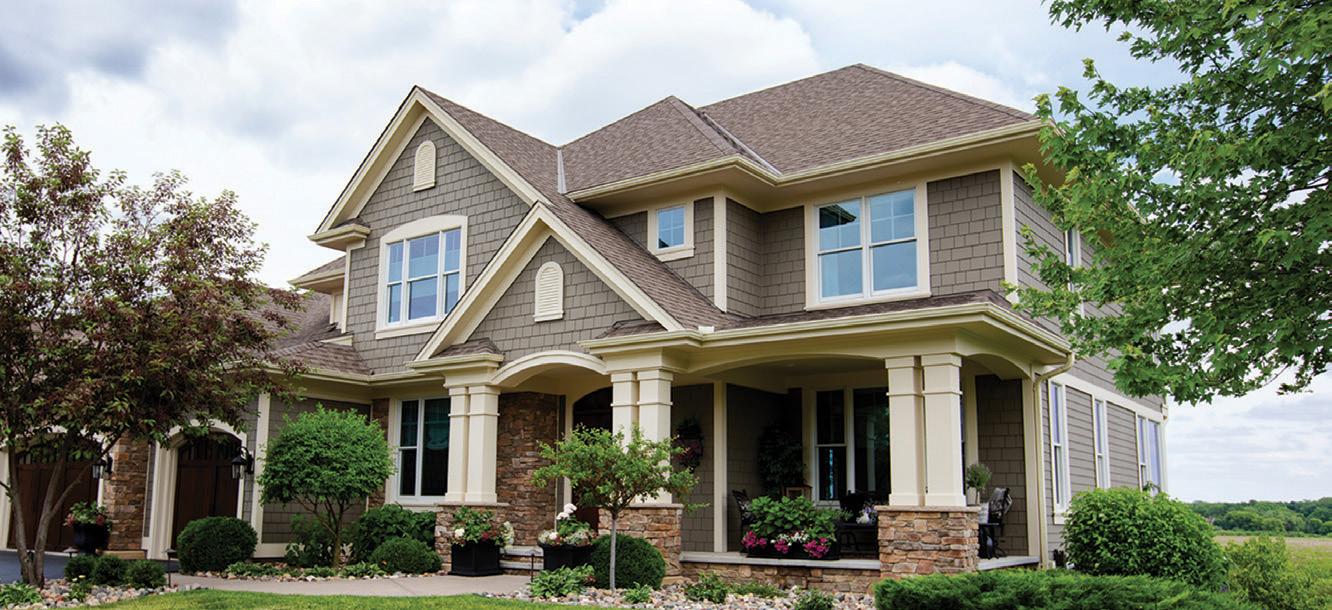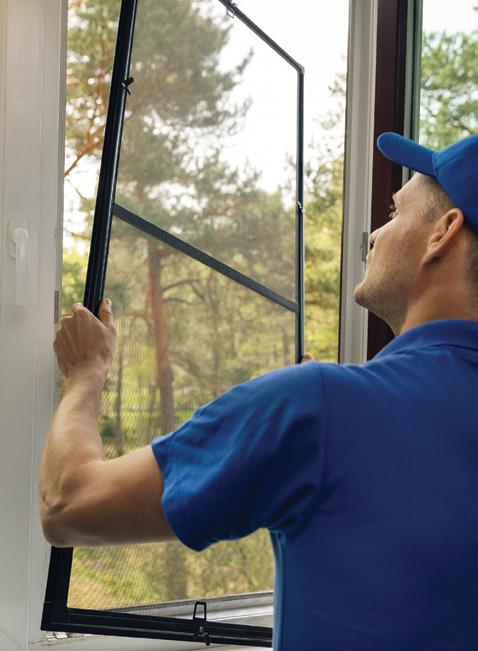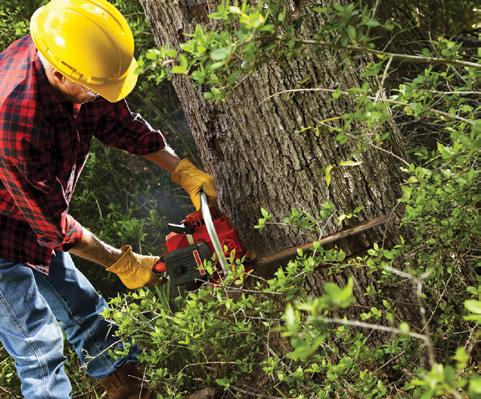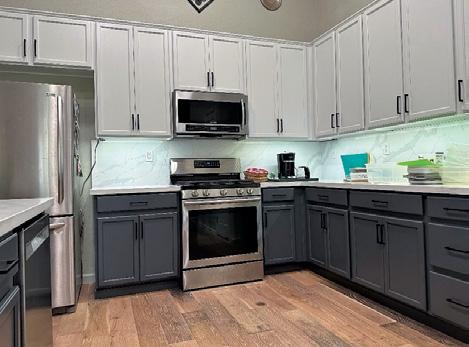






















































Ever since Michelle Garcia was a little girl, she was always fascinated with bathrooms.
Fast-forward years later, she, as the operations manager of her family’s company, Alliance Bath Reglazing, is helping customers do the same.
“It’s an industry that we fell into,” she said. “I’ve loved bathrooms since I was a little girl. It’s funny that I ended up in this industry.”
She, her husband, Daniel, and her sister, Krystal, and her husband Richard, have been helping commercial customers, (mainly the apartment industry), and residential customerπs save money by reglazing their bathtubs, vanities, and tiles instead of replacing them since 2017 after leaving a similar company they all worked for previously.
“We took a leap of faith,” Daniel Garcia, the president of the company, said. “We believed in ourselves. Now we have a thriving business, we have over 10 technicians and two women in the office helping us service the whole Bay Area from San Francisco down to San Jose, all the way out to Contra Costa County. We’re thriving.”
Alliance, owned by the Garcias and

Perez families, all started in a single house in Brentwood in 2017 with the tools coming out of a shed in the backyard. A year later, they were able to get the office space and warehouse that they have today on Harvest Park Drive. Their Office Manager, Natalie Ganda, was with the company from the beginning, originally working in the kitchen.
“It’s just something that we became passionate about,” Michelle Garcia said. “We like doing it, dealing with customers. It was just something that grew with us.”
Alliance started focusing on more residential work locally in Brentwood just two years ago and have become a staple – it was part of last year’s Holiday Parade
and several other community events – and was named the Business of the Year by the Brentwood Chamber of Commerce in February.
“The last few years, getting that connection with the community, they’re more aware of us,” Daniel Garcia said.
Alliance focuses strictly on reglazing, specifically kitchen countertops, bathroom countertops, and bathtubs instead of having to deal with the hassle and expense of replacing those, avoiding the mess of debris that projects like that often come with, taking what some would consider a week or weeks-long process to be done in just around two days.
After the work is done on the first day, the team returns to the project on Day 2 to perform quality control, making sure that the bathroom is up to their standard and cleaned up for the customer.
“Instead of pulling out your tub and replacing it, we bring it back to life,” Daniel Garcia explained. “When (potential customers) think their tub is damaged, they’re thinking automatically to rip it out and put in a new one, but it’s so expensive to do that. Once we tell them what we can do, and the amount of money that they can save, they come over here and we get it done.”
According to Michelle Garcia, Alliance’s services cost about $1,000, depending on the work that needs to be done.
According to Badeloft.com, a website that deals with bathroom replacements, the average cost to replace a bathtub in California is $6,000-$8,000 with the costs including removal, installation, disposal, and preparation.
“It’s like an everyday practice,” Krystal Mendez, Alliance’s vice president, said. ”You can’t just pull out a tub in a unit or a counter and be cost-effective.”
For details, call Alliance’s office at 925-679-7532, email work@alliancebath.com or go on social media @ alliancebathreglazing.
To view a video, visit www.thepress.net/ multimedia






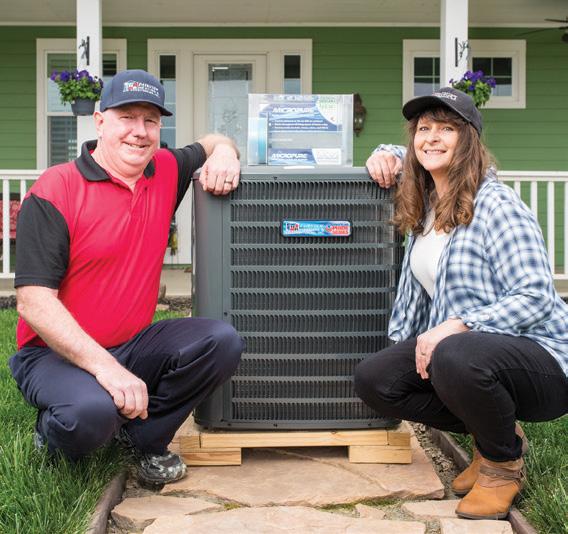
At the onset of the COVID-19 pandemic, many homeowners suddenly found themselves in need of more usable square footage in their homes. Required to work from home due to social distancing recommendations, millions of working professionals suddenly found themselves setting up shop at kitchen tables or islands, in alcoves, garages, or even walk-in closets. Those makeshift offices were never supposed to be permanent, but as companies loosen workplace policies and embrace full remote or hybrid working arrangements, professionals are seeking more permanent home office solutions.
Home additions are a possibility for homeowners who need more usable square footage, but add-ons may not be the right option for everyone. If adding on won’t work, homeowners may want to look up ... at their attics.
Attics with ample space can make for
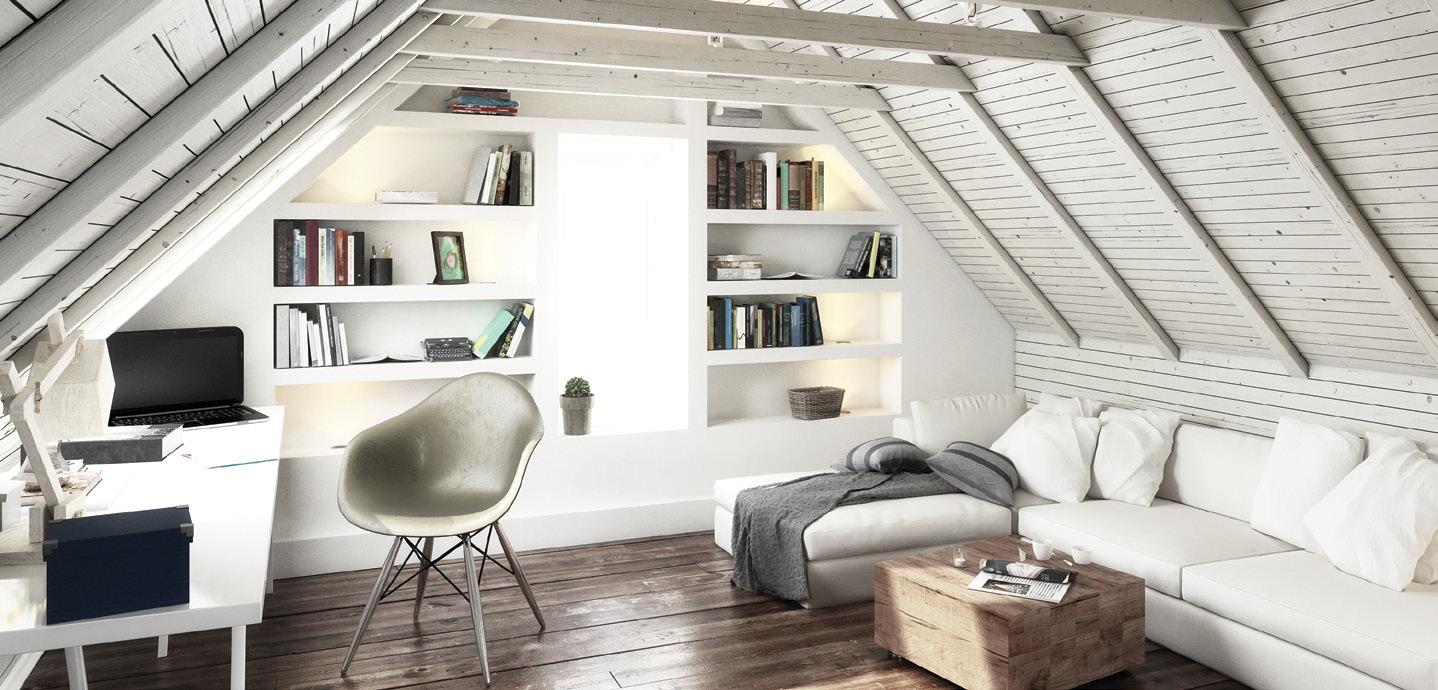
ideal home offices, as they’re away from the hustle and bustle of a home’s main floor. That can make it easier to concentrate when everyone is in the house and reduce the likelihood that video calls with colleagues and clients will be interrupted by kids and pets.
Attic conversions are not always possible, and the following are three important factors homeowners may need to consider before they can go forward with such projects.
1. Dimensions: Renovation experts at This Old House and the real estate experts at UpNest indicate that at least half of a finished attic must be a minimum of seven feet high and seven feet wide and 70 square
feet. Requirements may differ depending on where homeowners live, but that 7-7-70 guideline is generally the minimum requirement. An attic that fails to meet such requirements won’t necessarily be a lost cause, but it might be costly to make adjustments that ultimately align with local codes.
2. Access: Access is another aspect that must adhere to local safety guidelines. Many attics are accessible only through pulldown ladders, but that will have to change if homeowners repurpose their attic spaces. A staircase that complies with local laws will need to be installed, and contractors can work with homeowners to build that and estimate the cost. Homeowners who simply want
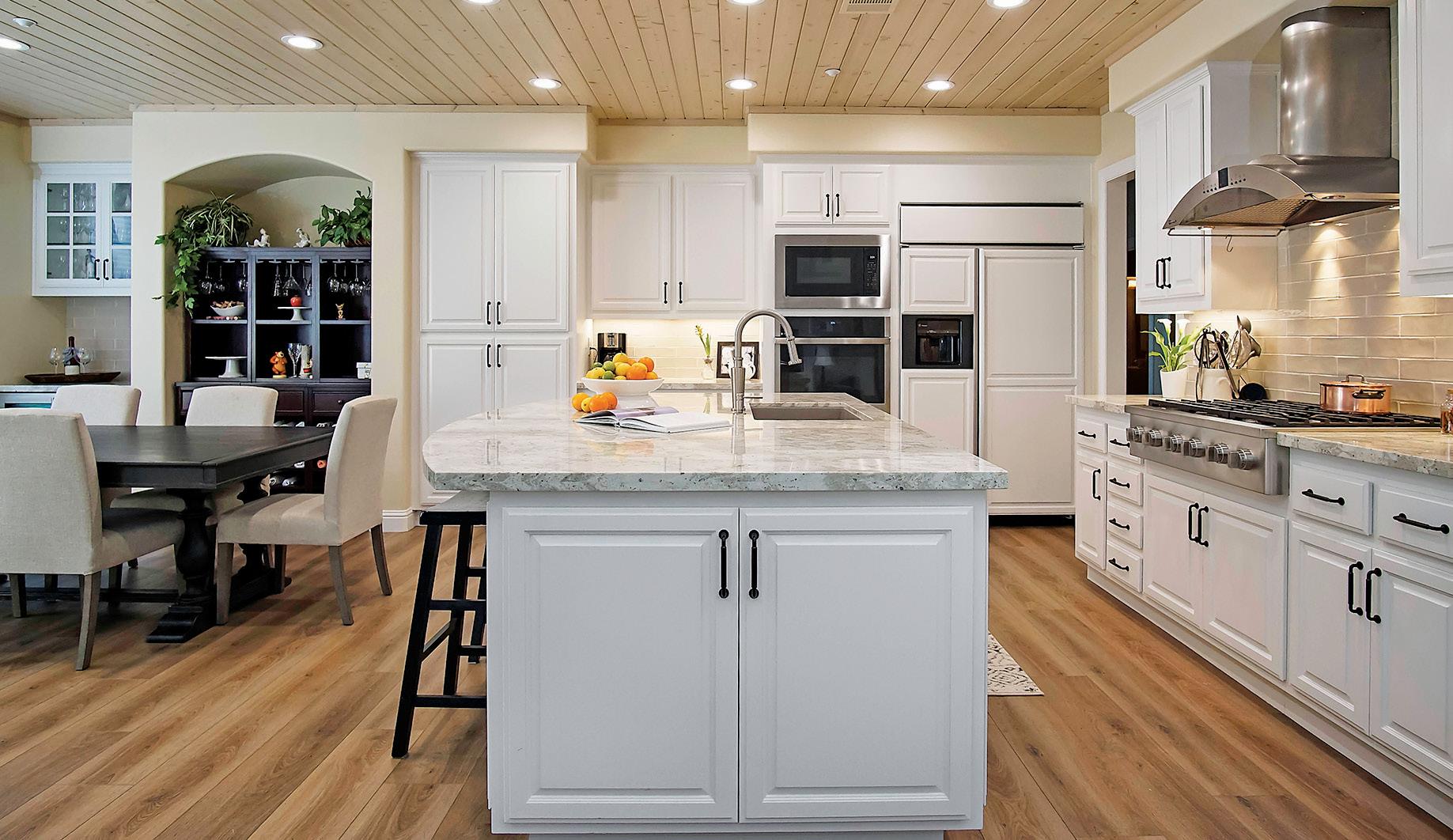
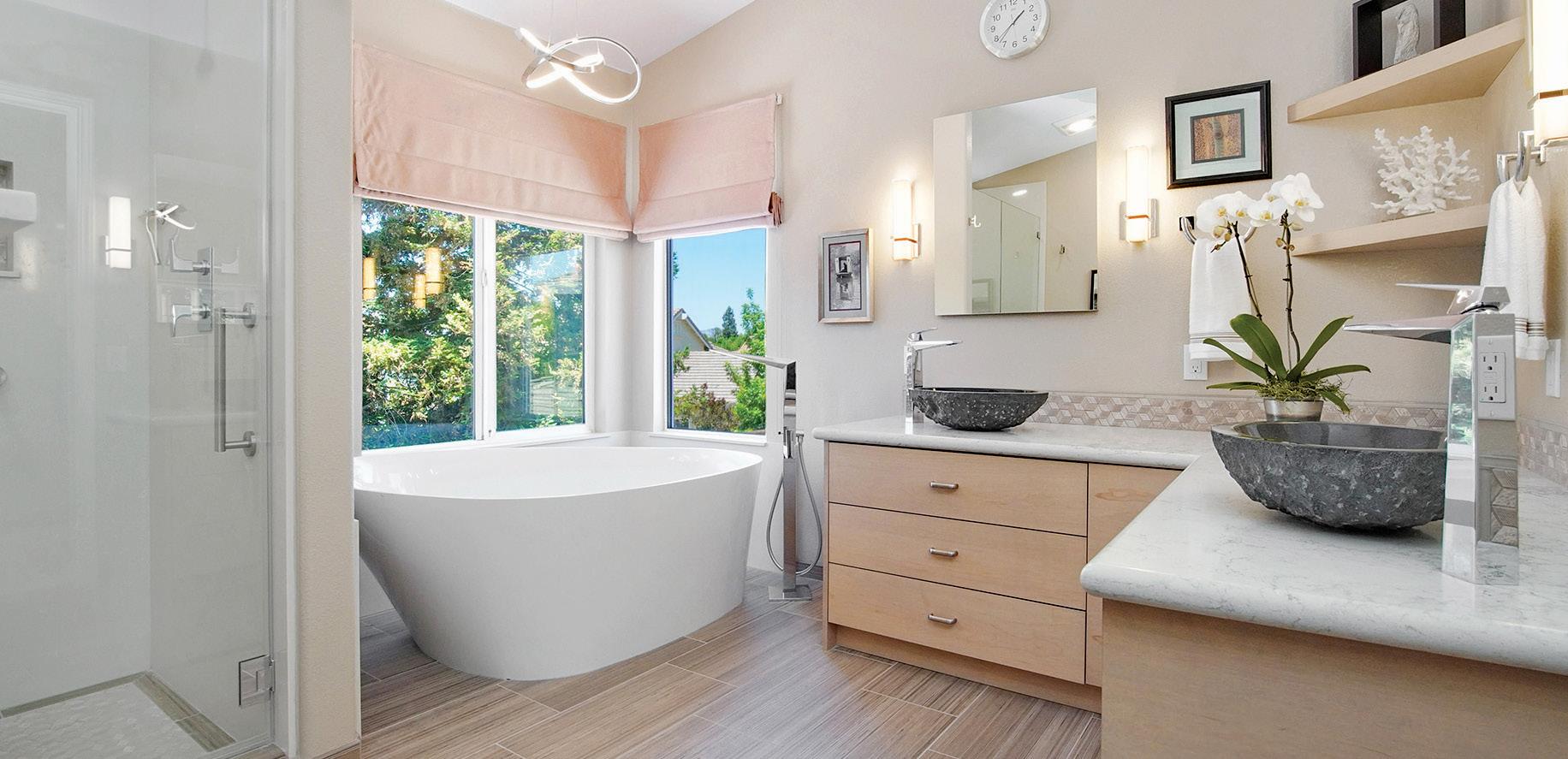
to put desks in their attics without going with full-fledged conversions are urged to adhere to local access requirements anyway, as they’re intended to ensure residents can safely escape attics in the case of a fire or another emergency.
3. Climate control: Attics are converted to provide residents with more livable space. Converted space is only livable if the climate within the attic can be controlled so it’s cool in the summer and warm in the winter. An existing heating, ventilation and air-conditioning unit needs to efficiently heat and cool an extra room. If it can’t, bills might spike because the rest of the home likely won’t be as comfortable, forcing homeowners to adjust thermostats to offset that discomfort. That also could affect the unit’s life expectancy. Before going forward with an attic renovation, homeowners should contact heating, ventilation and air-conditioning professionals to determine if attic spaces can be serviced with the existing units and ductwork, or if an alternative arrangement must be worked out to make the spaces livable.
Attic conversions can be great ways to make existing spaces more livable. Homeowners considering such projects should pay attention to three important variables as they try to determine if attic conversions will work for them.
– Courtesy of Metro Creative

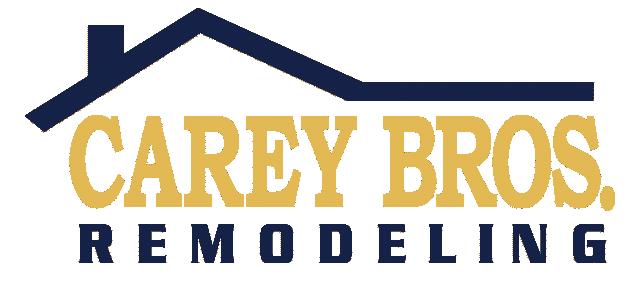
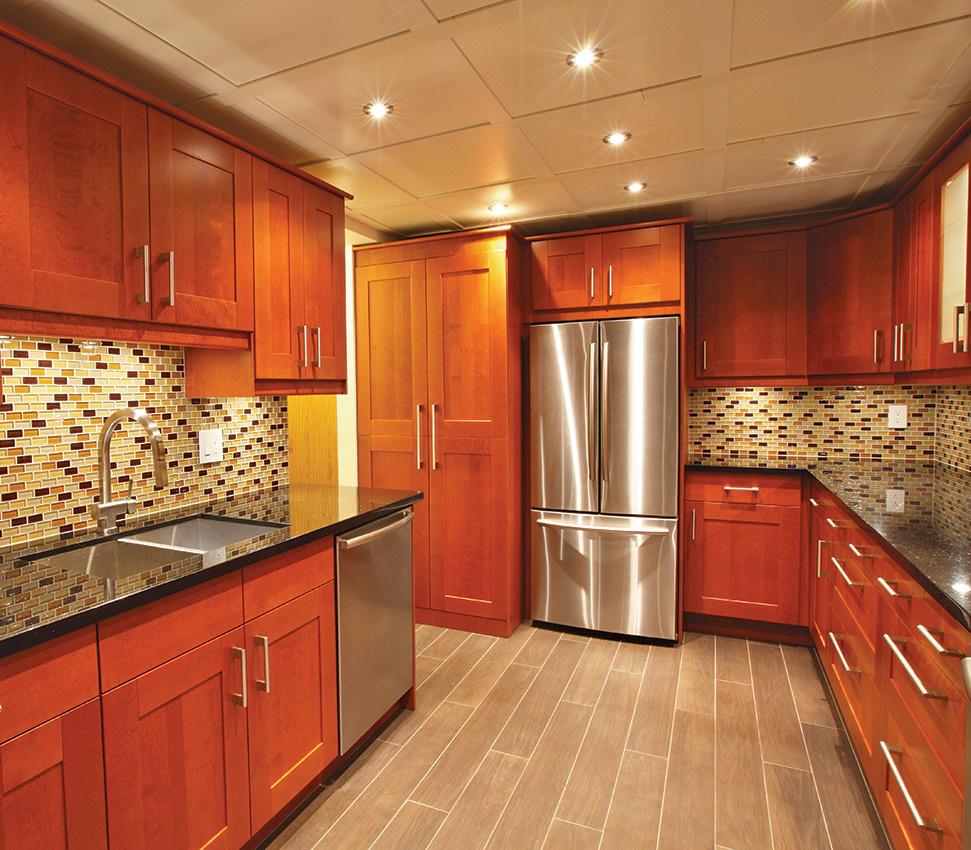

Kso much time spent in the kitchen, it’s easy to see how homeowners might grow a little bored by these rooms. The cost of a kitchen remodel won’t be cheap, as the home improvement resource Angi.com notes that the typical cost of such a project in the United States is between $13,000 and $38,000. Angi.com estimates even indicate that a high-end remodel could cost homeowners as much as $61,000. That’s beyond many homeowners’ budgets. But the good
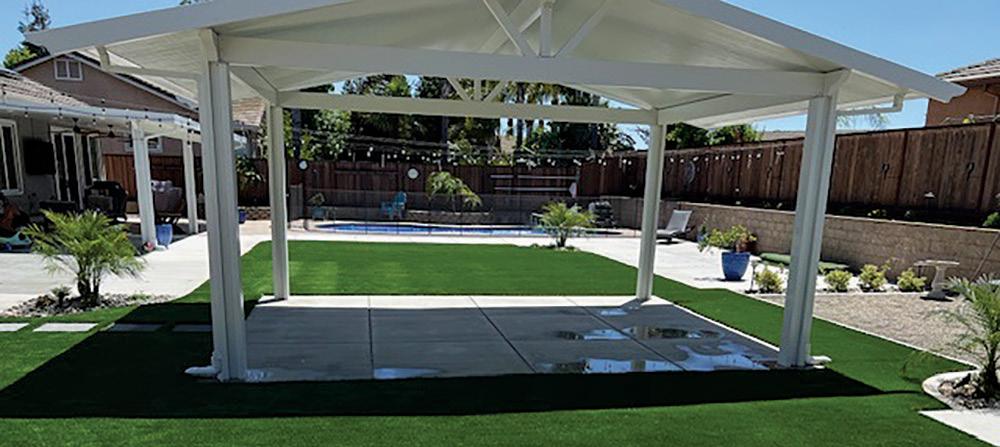










The peak of spring (and subsequent warmer weather) is fast approaching. And with higher temperatures comes more time in your swimming pool.
However, owning and maintaining a pool comes with a list of dos and don’ts that pool owners should adhere to ensure their pools are good to go not just for the spring and summer months ahead, but year-round as well, experts say.
According to Frank Marshall, owner-operator of Your Family Pool Service in Brentwood, cleaning one’s pool weekly is the best approach to keeping it in good shape as playing catch-up can be difficult when dealing with thousands of gallons of water. Pool filters are essential to clearing dirt and other pollutants from
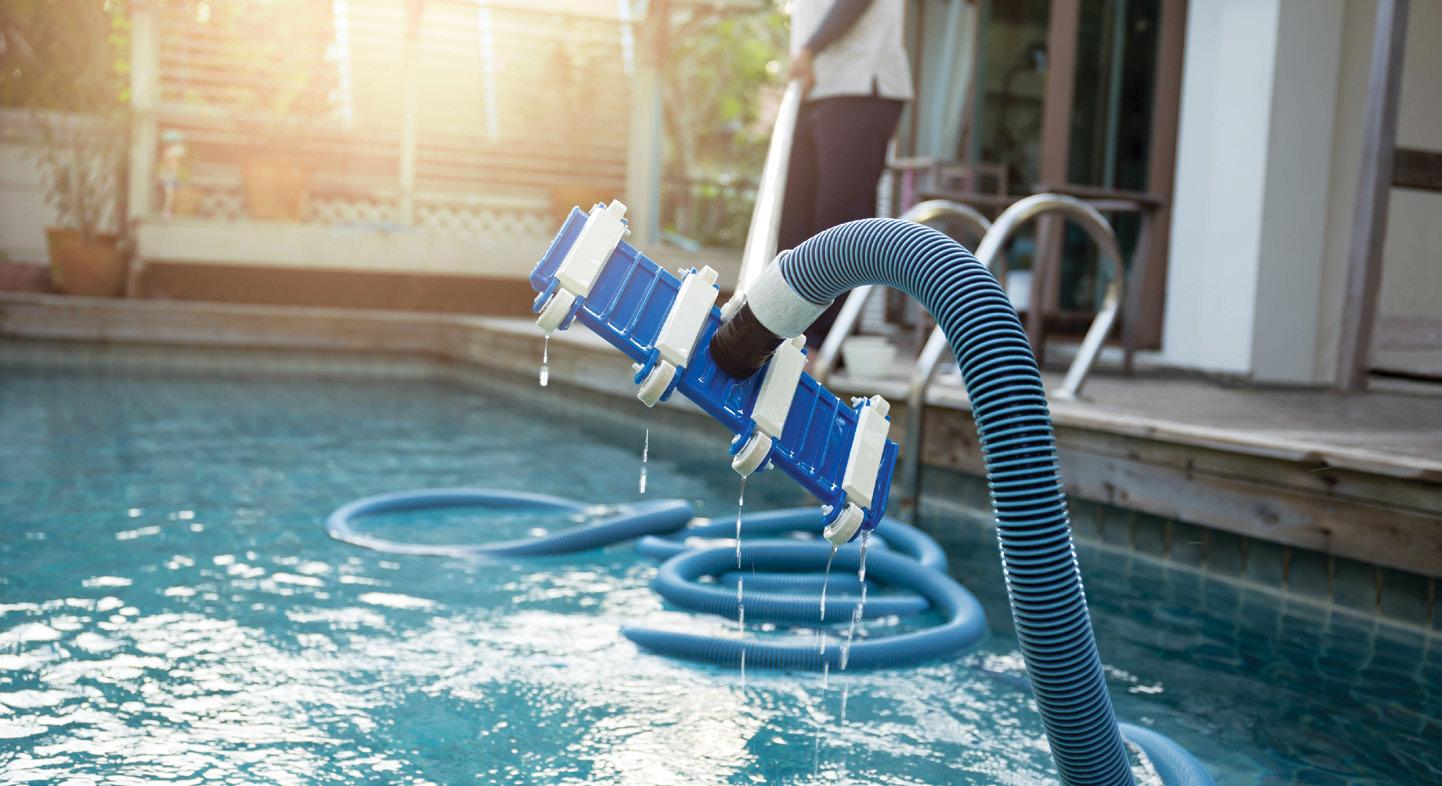
the water, such as bacteria contaminants or residues from shampoos, perfumes, and hair products. However, filters must be cleaned and inspected many times, so they must be replaced every three to four years.




“The best thing you can do for your pool to assure a great swim season is being regular about cleaning the filtration system,” Marshall said. “I would recommend a minimum of at least once, or ideally twice, a year, depending on your filter size and bather load. The ideal situation would be a spring and fall cleaning.”
According to the Swim University website on A Beginner’s Guide to Pool Maintenance, proper pool circulation is key to providing cleaner, clearer, and safer water ideal for healthy swimming so that common issues associated with poor pool circulation such as cloudy water and algae buildup rarely
occur. As a result, they recommend running a pool filter at least 10 to 12 hours a day, if not 24 hours a day, although Swim University acknowledges that this might cost too much for families on a tight maintenance budget.
Marshall added that a common mistake pool owners make is not consistently checking the pH and chlorine levels of the pool. He emphasized that routine, adding that drop test kits are his preferred method over the quick and easy dip strips because they are less expensive and more accurate. Local home improvement stores such as Ace Hardware stock pool maintenance tools and equipment, along with along retailers such as Amazon.
“It really is important to be testing chlorine and pH every week,” Marshall said. “The biggest benefit to maintaining proper chemistry is checking the pool every week, being consistent, and adding small doses of acid or chlorine to make the corrections. And shocking the pool (adding the necessary chemicals to eliminate contaminants such as algae, chloramines, and bacteria) once or twice a month or after a big party or event or after lots of swimmers are in the pool.”
While leaves and other debris will end up in pools, Marshall suggested that a pool cover is necessary unless one has an automatic pool cover that’s built directly into the pool deck. According to Marshall, the “bubble”

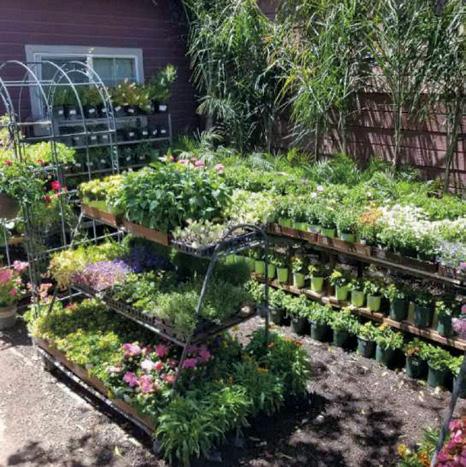
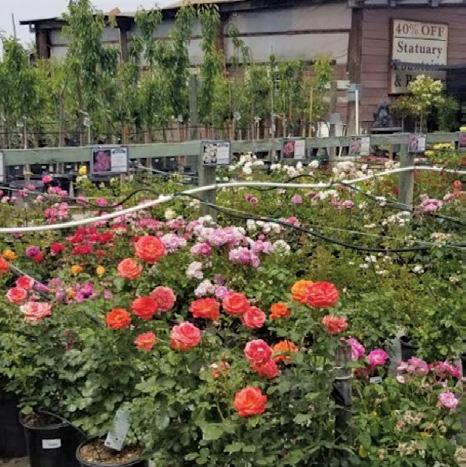

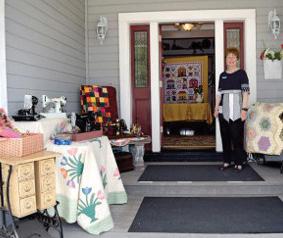
Delta Quilters Guild is hosting its third Sewing Room Tour on Saturday, April 13 from 11 a.m.-3 p.m. that will feature the sewing rooms of five local quilters.
sewing techniques and offer displays of popular 3-yard quilts. Then attendees can enjoy refreshments and local vendors at an outdoor reception from 2-4 p.m. All sewing rooms are in the Brentwood/ Oakley area, with specific locations identified when tickets are purchased.
Tickets are $20 in advance and $25 the day of the event if available. Purchase tickets at www.deltaquilters.org or call 925-852-4600.















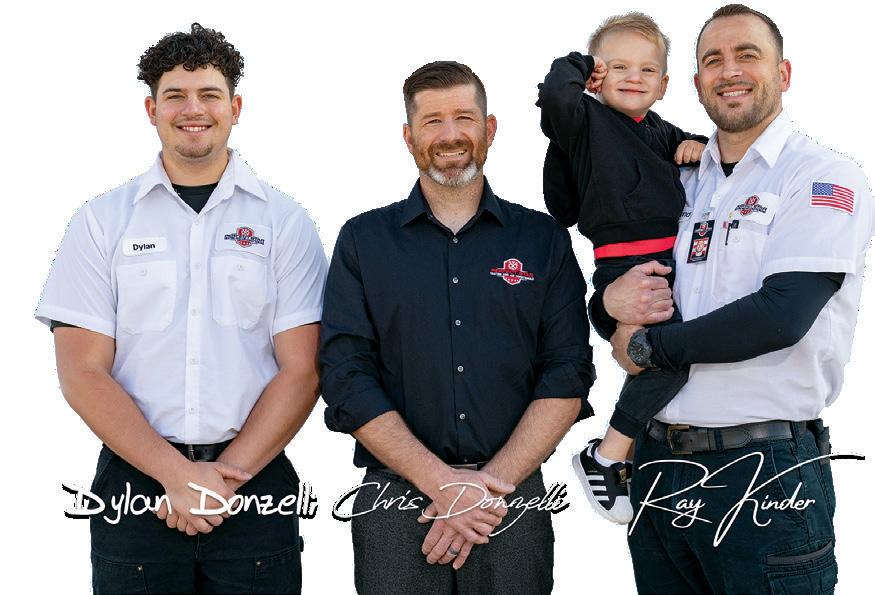






Spring has sprung, and whether you are an experienced gardener with a green thumb or are getting into all things plants and gardens for the first time, here are some trends and tips from Perez Nursery. Sitting on 10 acres off Walnut Boulevard in Brentwood, Perez Nursery specializes in multi-plant species, and offers one-on-one consultations between customers and employees to promote an experience that is personable and informative.
When you arrive at the nursery, you see rows of plants of all shapes, sizes, and colors. The nursery provides a stimulating plant environment. People who are new to gardening may find it intimidating, but it’s not long before an employee asks if they can help you find or know anything about a certain plant.
“Perez Nursery is a family owned business that has been in business for over 30 years,” said owner Irma Perez. “We are a landscape company and retail nursery. We grew up here in Brentwood, and we know the environment and soil conditions of the area and therefore are able to guide our clients on making better plant selections. We special-

ize in carrying a large selection of shade trees, shrubs and perennials that you don’t find in box store nurseries. When people shop at Perez Nursery they like the feeling of being at a plant nursery; they especially like the personal service we give our clients, guiding them on making the right plant selection.”
Gardening can be therapeutic for those who love to see their hard work and plants thrive; it can bring a sense of accomplishment as well as results that can make any neighbor jealous. To better prepare yourself for your garden project, here are three tips from Perez:
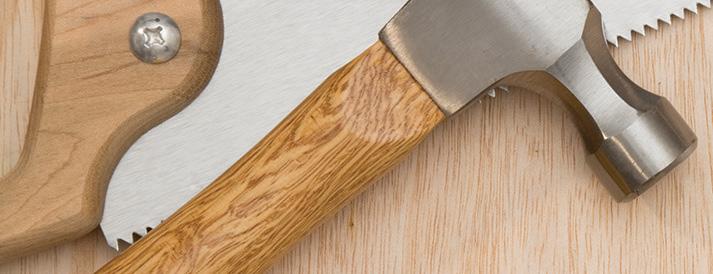



♦ Know the layout of your garden area. What parts are in the shade, and in the sun? This can help you determine what plants will thrive in either or both conditions.
♦ Know the type of soil in your garden. Clay, or sandy soil can determine how much water the soil can hold. Depending on the plant species you are looking to plant, it may also require you to replace the soil as each plant will have its watering requirements.
♦ Take your time, enjoy the process, and ask questions.
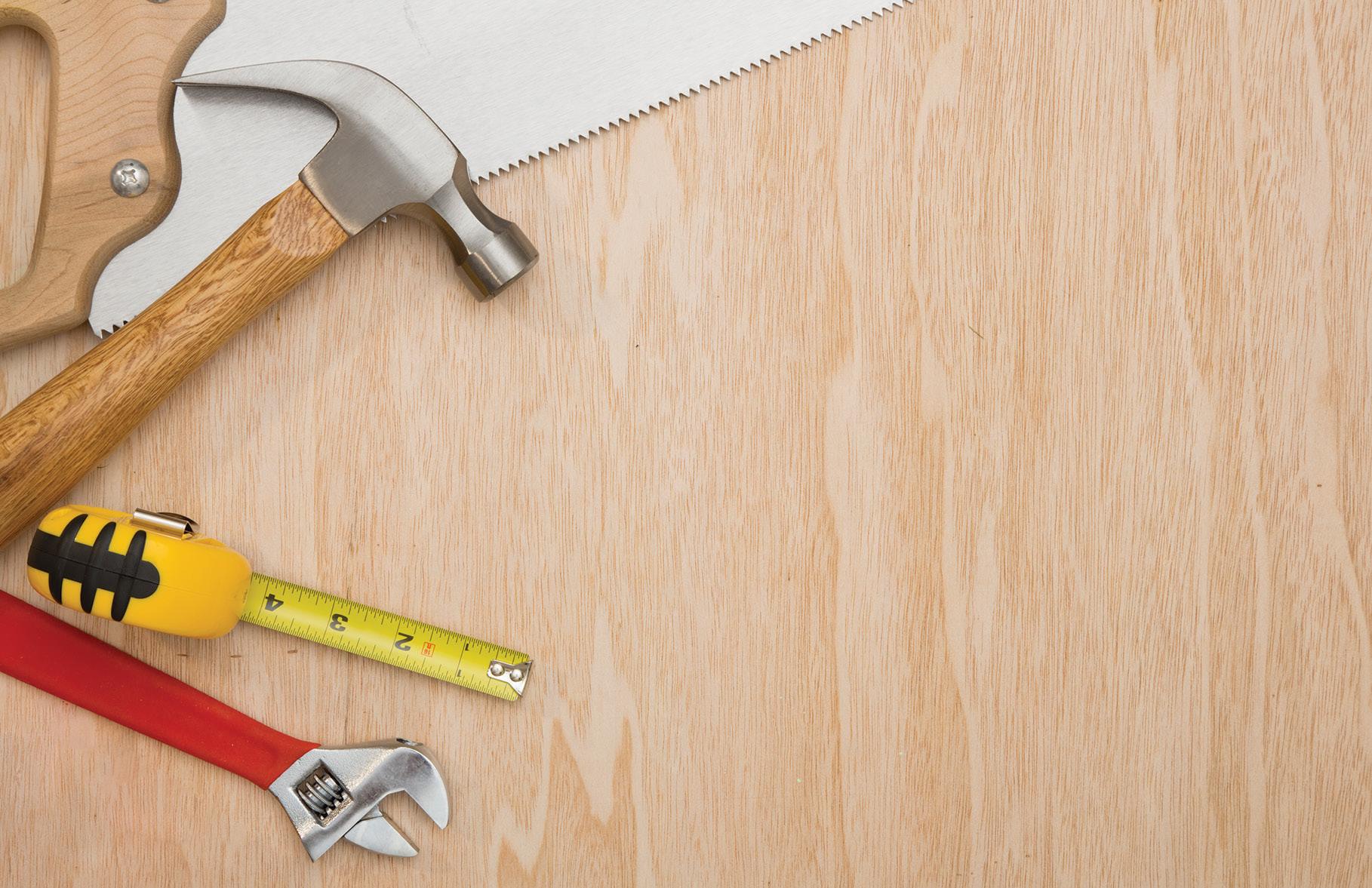
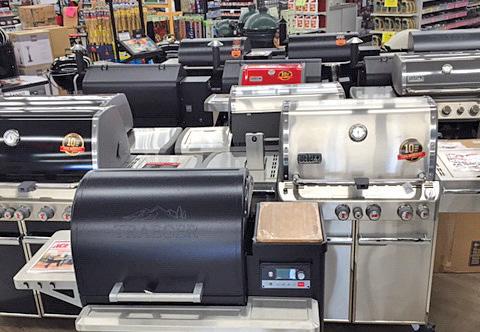







If you are unsure of the condition of your soil, or if it’s the right time to buy or seed a certain type of plant, ask for help, The nursery will help clarify and explain in detail the steps you should take to prepare your garden for success. Visit the nursery and look at different plants just to see what you are attracted to. Ask the nursery professionals to guide you and just enjoy the process.
A popular gardening trend this season is “wellness gardens’’. Many gardeners are choosing to model their outdoor gardens and indoor plants to help boost mood by producing certain scents and colors.
“Planting drought-tolerant and lowmaintenance plants, shoppers are looking to turn their outdoor space into a place they can relax and feel happy,” Perez said. “Lavender, gardenias, rosemary, thyme, jasmine. Pollinator plants are very popular; lavender, rosemary, gaillardia, bee balm, milkweed, sunflower, zinnias, fescue and many more.”
Perez Nursery is at 2601 Walnut Boulevard, and is open Mondays through Saturdays from 8 a.m. -4 p.m. Their phone number is 925-516-1052.
To view a video, visit www.thepress.net/ multimedia




















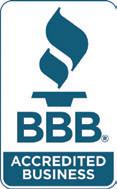
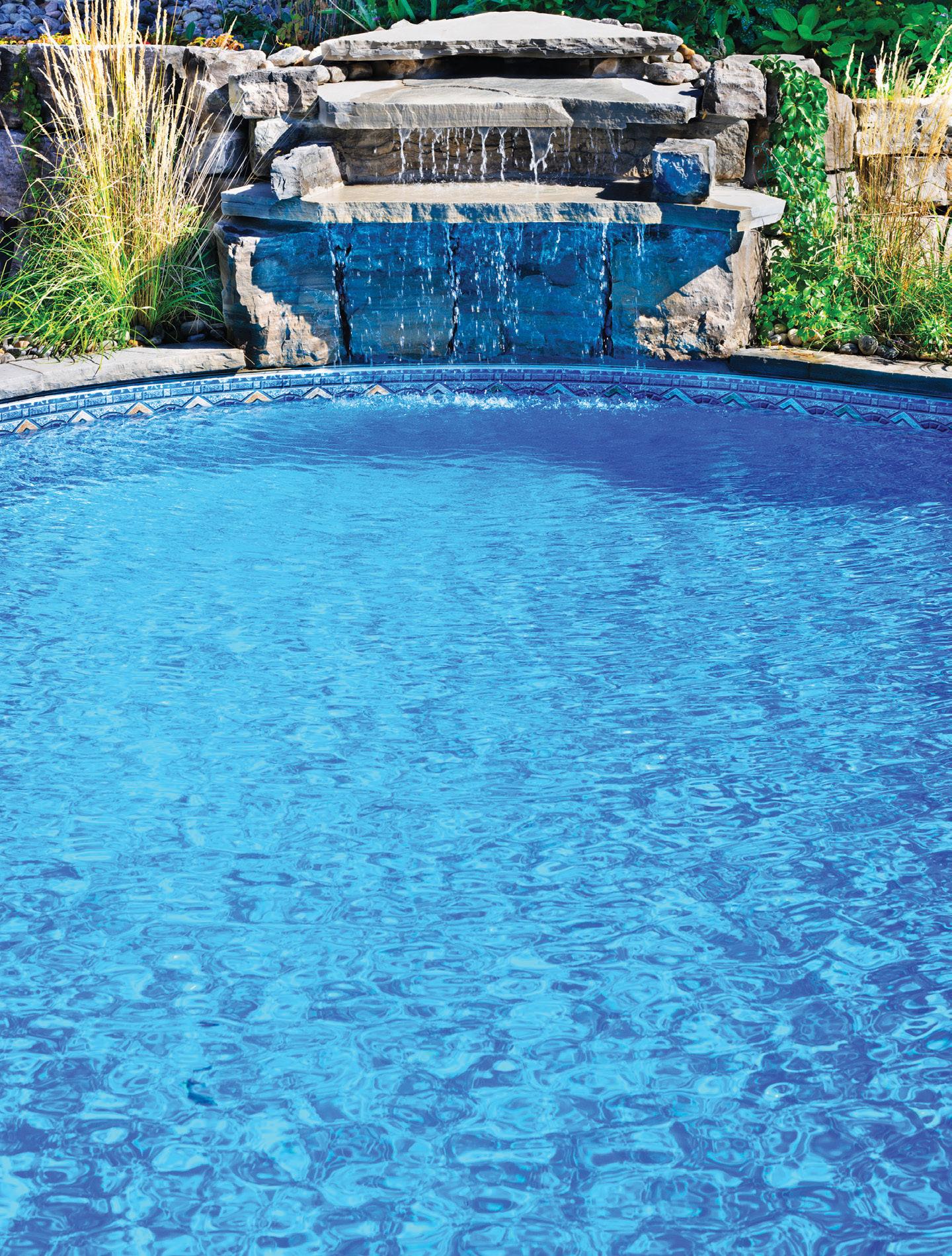
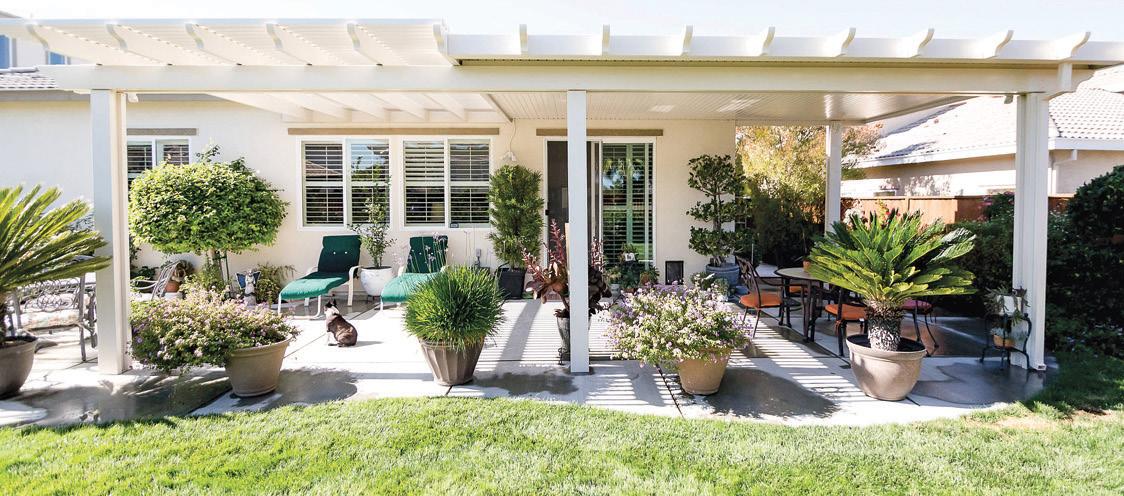
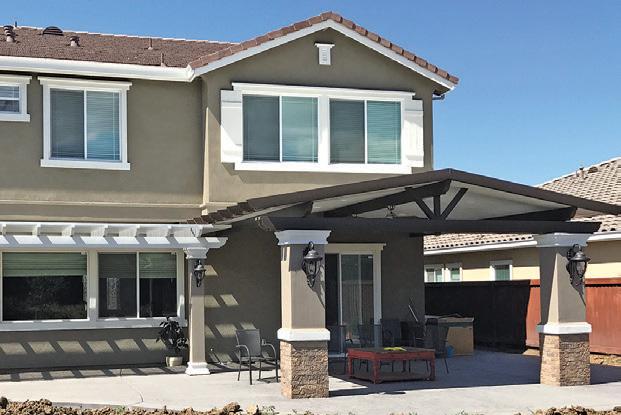
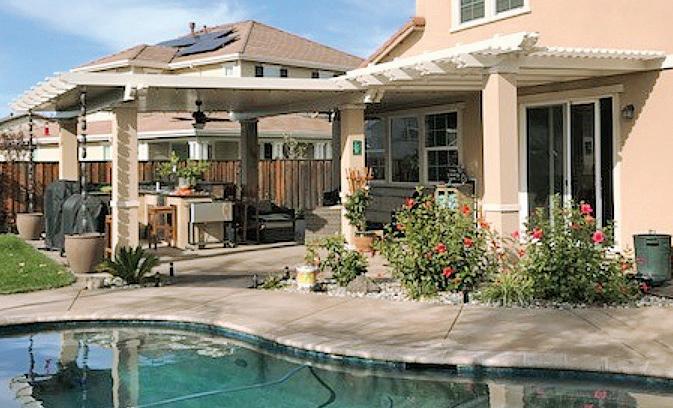


Kitchen from page 5B
news is that there are many quick and easy, not to mention less expensive, ways to give a kitchen a new look.
♦ Repaint and restyle the cabinets. Cabinet space is an undeniably precious commodity in a kitchen, especially as more and more homeowners embrace their inner chef and cook more complicated meals at home. After all, the more expansive a home chef’s culinary repertoire, the more space that person needs to store all the tools of the cook ing trade. A full cabinet replacement is unneces sary if the cabinets are still functional and not overcrowded, so repaint ing them can be a great way to give the kitchen a new look while keeping costs reasonable. During the painting proj ect, homeowners can install new cabinet knobs and/ or drawer pulls to freshen up the style of the cabinets even further.
ers don’t want to have their overhead lights on but still want to be able to navigate the kitchen safely. During meal prep, under-cabinet lighting can illuminate counters so it’s easier to chop, peel and perform other tasks.
♦ Replace existing backsplash. Replacing backsplash is another simple, inexpensive and effective way to give a kitchen a new feel. Homeowners can opt for something neutral that won’t upset their existing decor or go with a more bold backsplash that immediately draws the attention of anyone who enters the room. This simple job can be done by the average do-ityourselfer, and the cost of new backsplash won’t break the bank.

♦ Install under-cabinet lighting. This is another inexpensive way to give a kitchen a new look. Under-cabinet lighting serves both an aesthetic and practical purpose. From a purely aesthetic standpoint, under-cabinet lighting can make a kitchen feel more warm and keep the kitchen illuminated when meals aren’t being prepared and homeown-
♦ Replace existing seating. Whether you have an island countertop with bar stools or a breakfast nook with cushioned seats, replacing the seating is a budgetfriendly job that can create a new look when entering the room. Countertop bar stools come in many styles, so giving this area of the kitchen a new feel can be as simple as shifting from classic, high-back stools to more modern swivel stools with a chrome base. For the breakfast nook, replacing a light-colored bench cushion with a bolder alternative can instantly transform the look of the space.
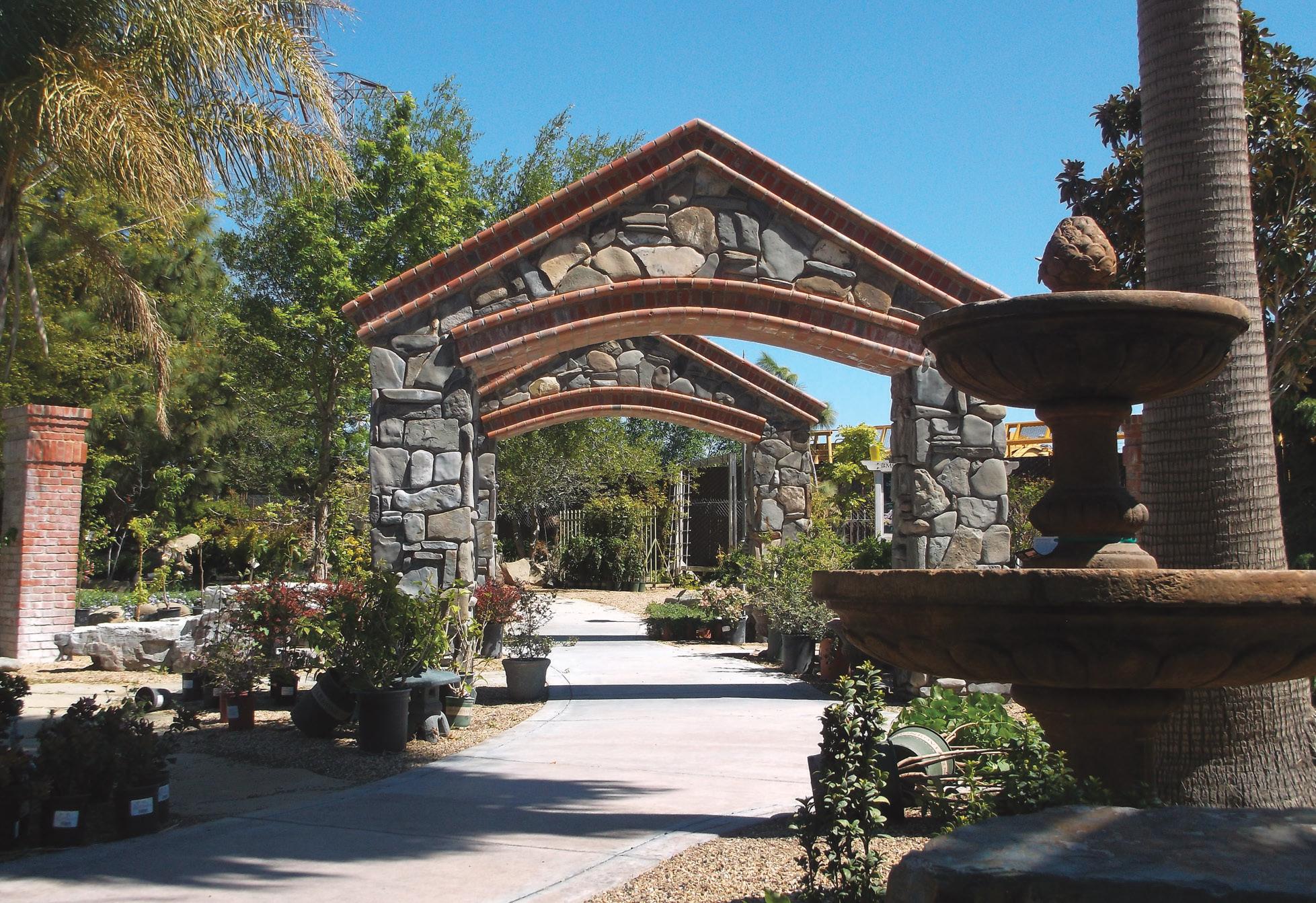





Maintain from page 6B
type covers work great for helping eliminate evaporation and holding chemicals and heat in the water, but they do nothing to help keep the pool clean.
“I would recommend an adjustable pool pole, an 18-inch nylon brush, and a pool net,” Marshall said. “Try to keep the rake and the brush out of direction. It should last for a long time. I would recommend brushing down the whole pool each week.”
Marshall said that failing to maintain a swimming pool properly could result in necessary services or repairs, which could include potential dumping of the water, acid or chlorine washing the pool, or replacing the pool filters that could cost customers about
$1,000. Even when people leave to go on vacation, especially during the heavy travel months in the spring and summer, Marshall suggests that pool owners have someone check on their pools regularly, particularly the skimmer baskets and chlorine levels.
“Don’t put off maintenance to the last minute,” he advised. “It’s something that should be handled on a weekly basis, even in the winter.”
For more information, visit Your Family Pool Service at 3130 Balfour Road in Brentwood, call 925-240-8954, or email yourfamilypoolservice@gmail.com, For details on pool maintenance, including more specific instructions on pool care, visit https://www. swimuniversity.com/pool-maintenance/


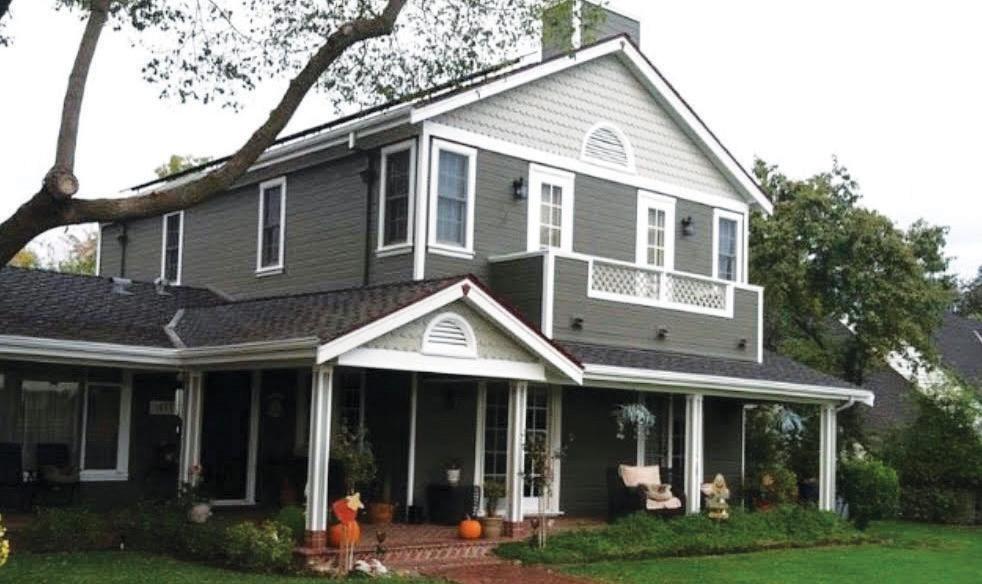

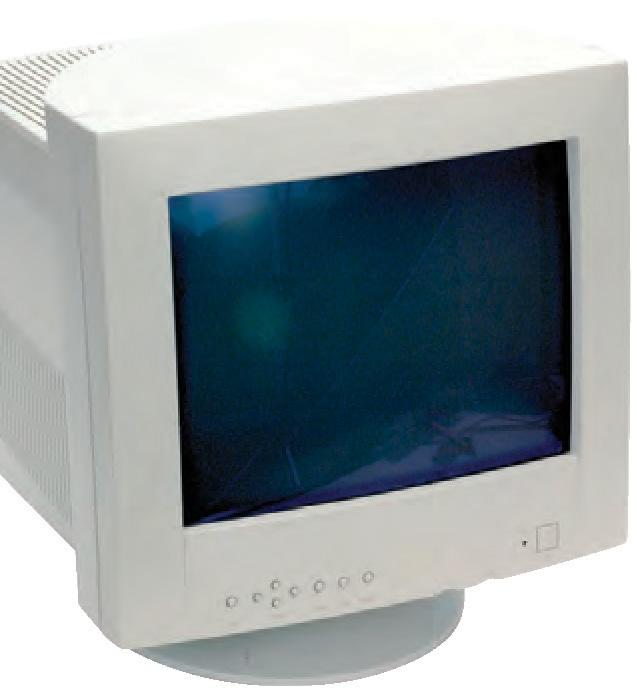

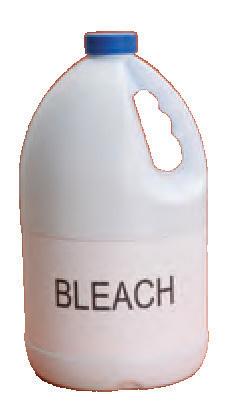
















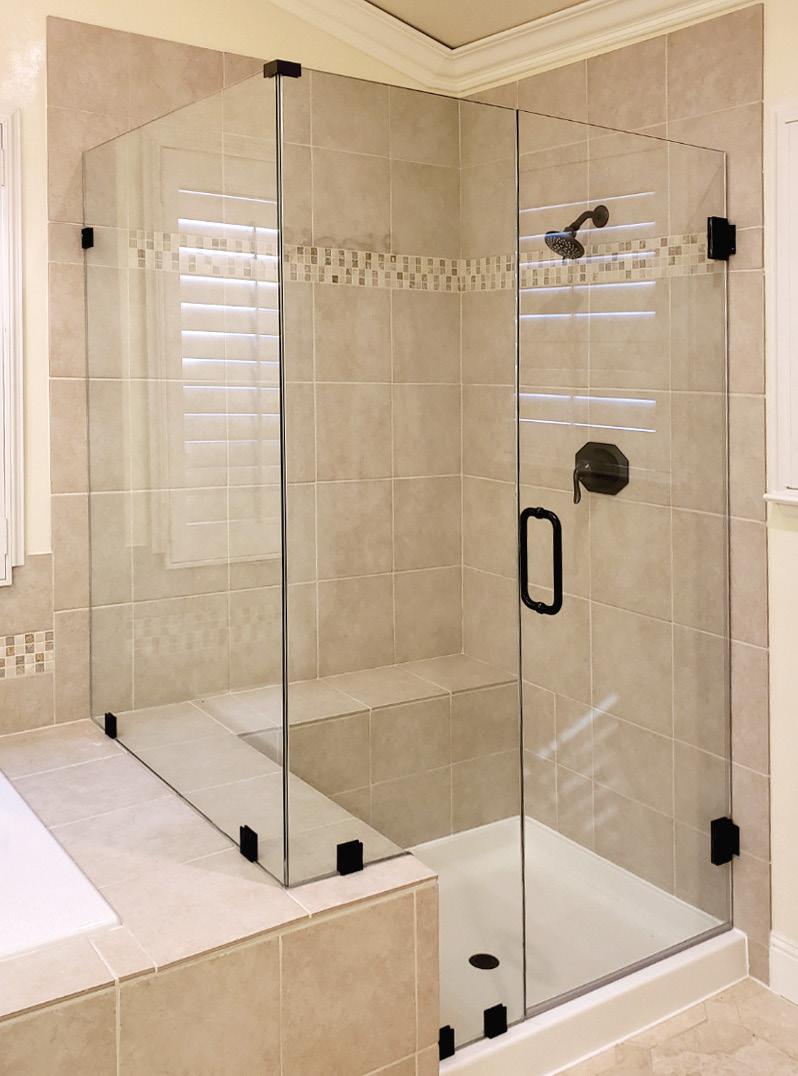
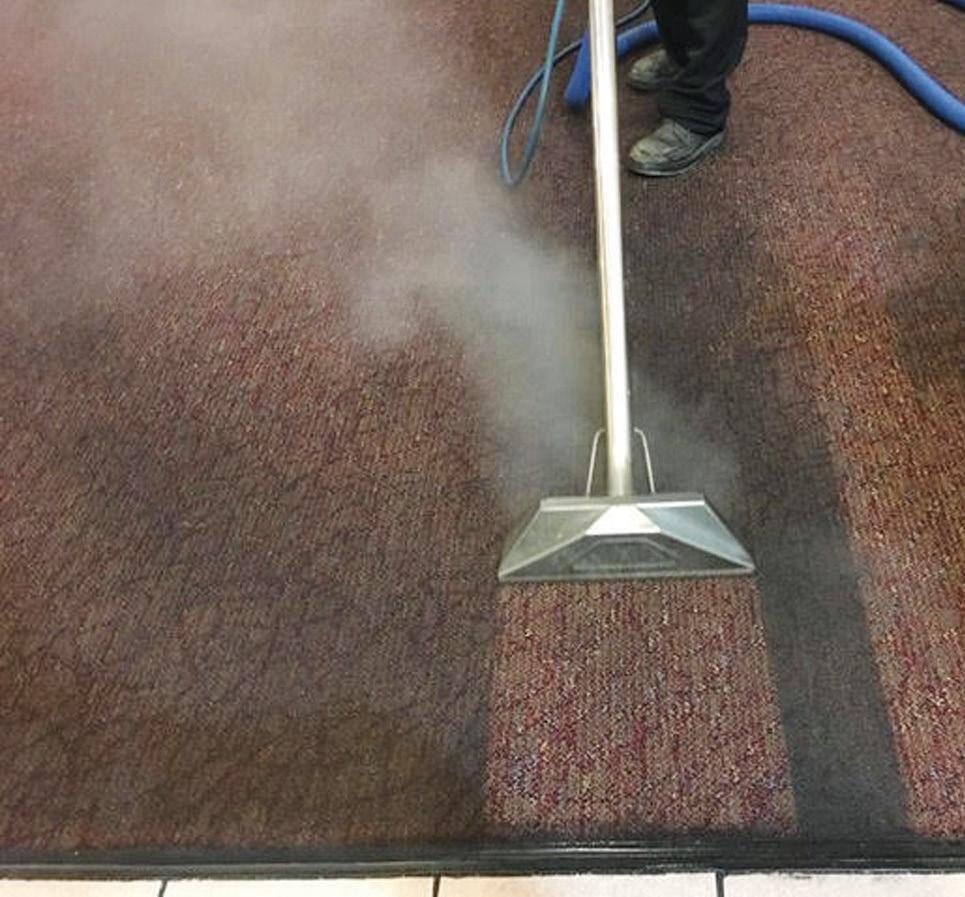
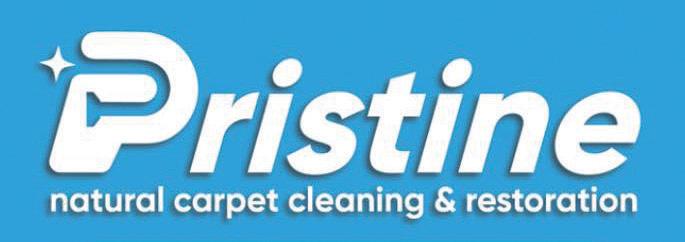




Shower Doors and much more including:
Spring is a great time for homeowners in various regions to reseed or replant their lawns. With the right approach, homeowners can enjoy a full and lush lawn throughout summer.

Spring marks the return of flowering plants and warm weather. And homeowners know that spring also ushers in the return of the home renovation season.
Homeowners undoubtedly have an extensive list of projects on their to-do list this spring, and that may include helping their lawns and gardens recover after a long winter. Unpredictable weather, which can

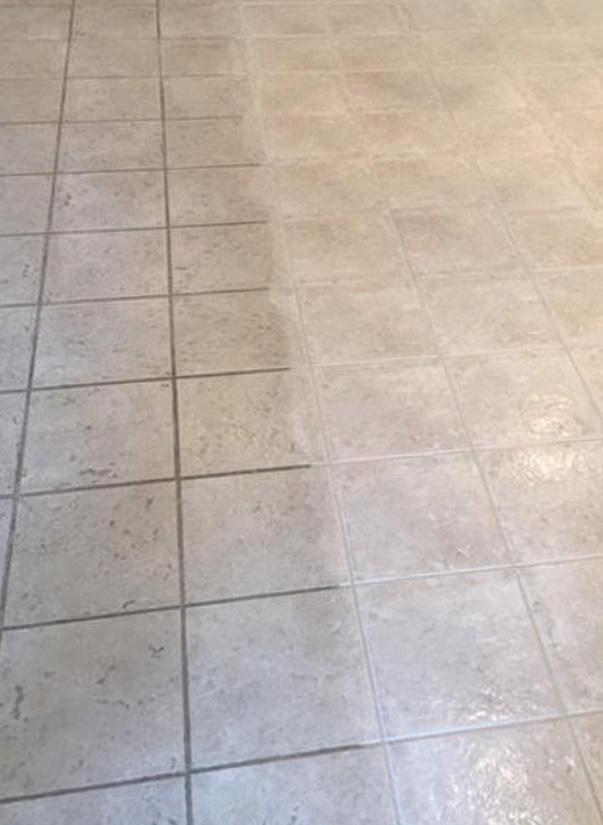
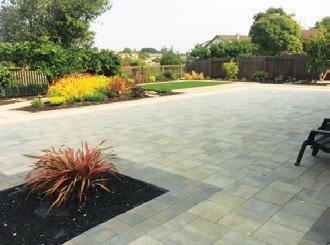
include drought and excessive rainfall and everything in between, can take its toll on a lawn. In certain instances, the best solution may be planting new grass. But homeowners can consider these tips before they begin the process of reseeding or replanting their lawns.
Scarifying a lawn (using a tool to clear matted grass and moss from the surface of your lawn and lightly opening up the ground to add air and improve growth) can help

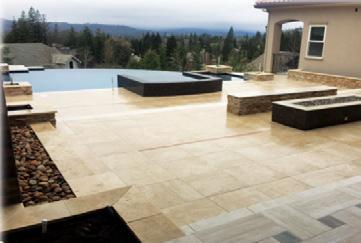

arages may rank below kitchens and bathrooms in the home renovation pecking order, but these unsung heroes of suburban dwellings deserve their day in the sun.
It’s easy for garages to become convenient, if crowded and disorganized, storage spaces, but scores of homeowners are embracing the idea that renovated garages can serve a more functional purposel.
Prior to beginning a garage renovation, homeowners can consider a host of factors that will guide the direction of the project and ultimately produce a more functional space.
Though many homeowners understandably want to ensure their homes are amenable to their own lifestyles without worrying about the effects a given project might have on resale value, it’s best that they do not completely ignore the latter variable. A 2019 analysis from the National Association of Home Builders found that 65 percent of newly constructed homes included two-car garages. That suggests a traditional two-car garage remains widely appealing. However, it’s worth noting

that the NAHB analysis was conducted prior to the COVID-19 pandemic, when fewer people were working from home. Now that more people work from home, some may see a garage converted into a home office space as more functional. Homeowners can speak with a local real estate agent to learn more about local buyers’ preferences before beginning a garage renovation project.
It’s important to consider why you want to renovate the garage. Is it to build a designated home office space? A fully outfitted home gym? A home theater? An extra bedroom? An in-laws suite? Each of these options are popular reasons to renovate a garage, and each may require a different approach during the project. The desired function also may affect the cost, so it’s best to identify precisely what the room will be used for post-renovation.
When mulling a garage renovation, contact a local garage conversion expert to audit the space. Such a professional can assess the existing space and determine what will need to be done beyond the design of the room. Will additional electri-


cal outlets need to be installed? Will the room require additional ventilation? Will a new doorway need to be created to allow for easier access? These are questions a qualified expert can answer. Some may estimate the cost as well, but it’s likely the garage expert will defer estimates regarding electric and ventilation to contractors who specialize in those areas.
The home renovation experts at Angi estimate that the average garage remodel costs around $18,000. That’s considerably

less than a home addition project, which can easily exceed six figures. So a garage remodel might be more budget-friendly than a room addition. However, homeowners should consider what’s currently in their garages and where those items will end up if the room is repurposed. If it’s primarily lawn care items and kids’ toys, a new shed with ample storage space might work. But if the garage currently holds more items than can reasonably fit in a shed, homeowners should determine where those items can be stored once the garage is repurposed.




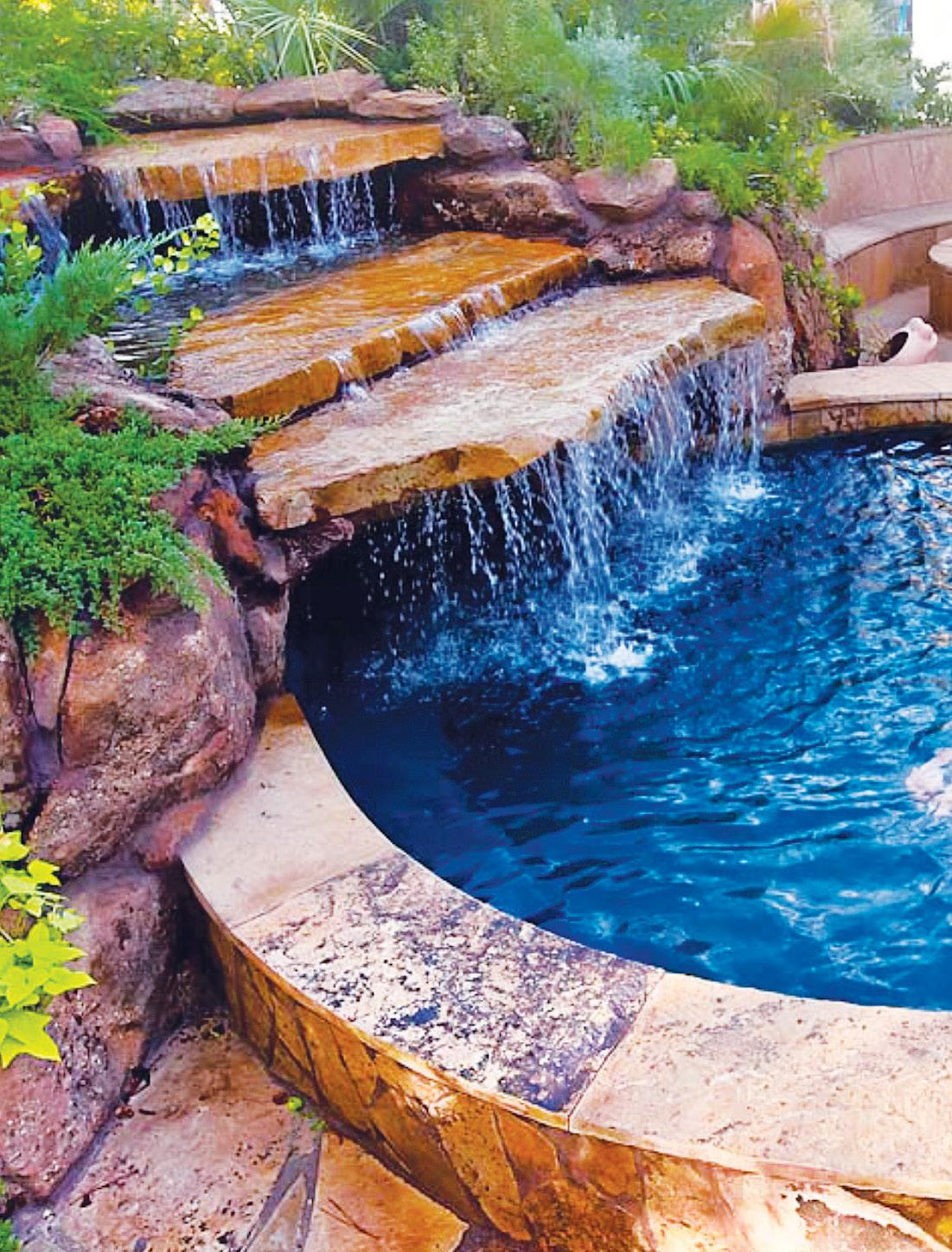














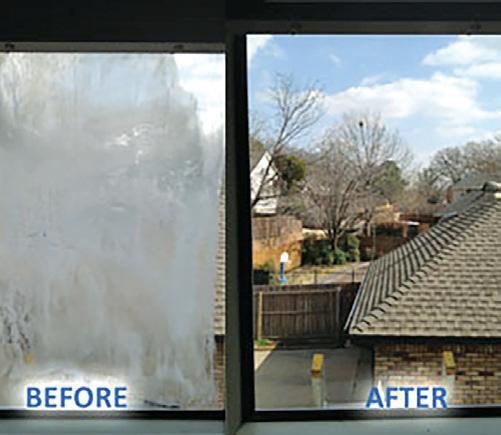
Lawn from page 12B
to create a clean slate, but the timing must be right. Various lawn and garden experts, including those at BBC Gardeners’ World Magazine, recommend scarifying in spring or early autumn. But don’t jump the gun when scarifying in spring by doing so before the lawn has started to grow after a dormant winter. Scarify when the soil is a little wet and the grass is once again actively growing. Scarifying can remove any lingering weeds from last season and also pull up any moss that might have taken hold over the winter. Without weeds and moss to contend with, freshly planted seeds are in a better position to thrive.
Homeowners with manageable lawns can likely scarify their own lawns with a relatively inexpensive plug-in scarifier. However, scarifying can be a strenuous physical activity, particularly for homeowners with large lawns. In such instances, homeowners can benefit from working with a qualified landscaping professional. Such a professional can scarify the lawn and subsequently reseed or replant new grass. The latter task is not so simple, as the lawn care experts at Scotts note that choosing the correct seed is a vital part of reseeding or replanting a lawn. Choosing seed may sound simple, but it’s a potentially complex decision that requires knowledge of the existing grass,
including when to plant it. Certain grasses are best planted in spring or early fall, while others are best planted in summer. A qualified landscaping professional can identify the existing grass and plan the seeding or planting around this important detail.
Watering is vital to the long-term success and health of freshly planted grass seed. Scotts urges homeowners to keep the top inch of soil consistently moist, but not soggy. That requires a daily commitment, and setting a multi-function hose nozzle or sprinkler to “mist” once per day or more if it’s hot outside can increase the chances grass will grow in thick and strong. Scotts recommends keeping the top two inches of the soil moist until the new grass reaches a mowing height of roughly three inches. Once that benchmark has been reached, watering frequency can be cut back to about twice per week, but now the soil should be deeply soaked instead of misted. The soaking will help roots grow deep into the soil.
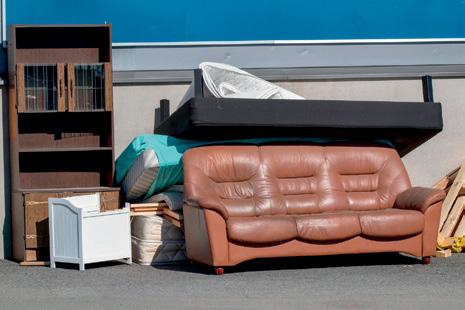






Spring marks the return of lawn and garden season. Lawns often bear the brunt of winter’s wrath, so spring is a great time to nurse them back to health, and fertilizing can be an essential component of that process.
Fertilizing a lawn can be intimidating. An array of fertilizers, with each seemingly designed to address a different issue, can make homeowners’ heads spin when visiting their local lawn and garden center. However, fertilizing is a very simple task that any homeowner can tackle. In fact, fears about fertilizing are often unfounded and can be overcome with some basic knowledge of the process.
♦ Identify which type of grass is in the yard. The home improvement experts at HGTV note that turfgrass is divided into

two categories: cool-season grass and warm-season grass. A local lawn and garden center can help homeowners identify



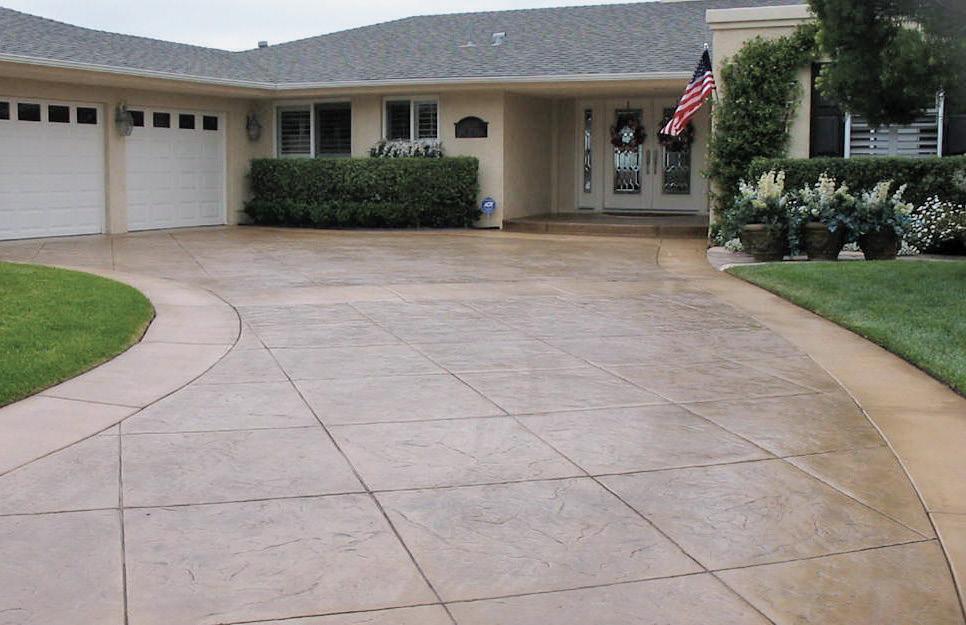
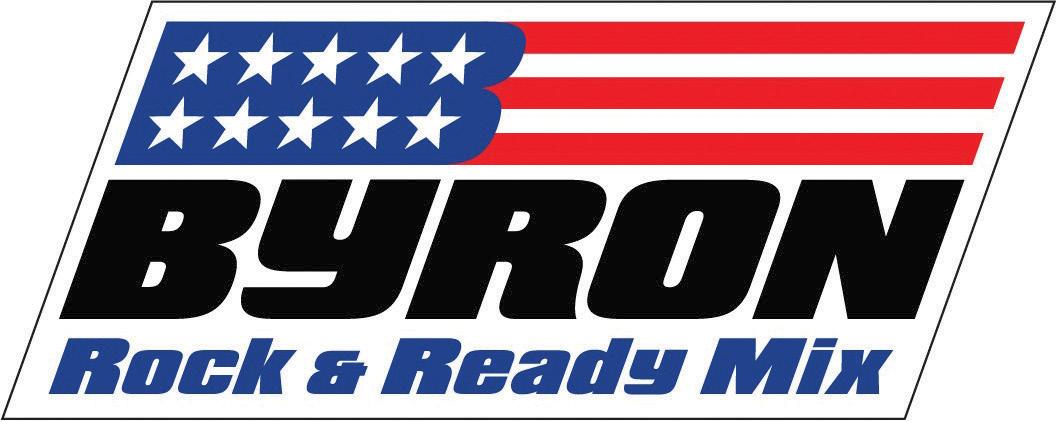
which type of grass is in the yard, and this often depends on location. Fescue, bluegrass and perennial ryegrass are some examples of cool-season grasses, while Bermuda, bahia, St. Augustine, and zoysia are considered warm-season grasses. Identifying which type of grass is in the lawn is important because that will indicate when to fertilize. Cool-season grasses are typically best fertilized in early spring, while warm-season lawns can benefit from an application just before especially warm temperatures arrive.
♦ Survey the lawn to identify which spreader to use. A small yard or a thriving lawn with only a few bald or unsightly patches may not need a full application of fertilizer. In such instances, a hand spreader can suffice. For larger lawns and areas, a broadcast spreader is the ideal option.
Spreaders have multiple settings, and the fertilizer package will indicate which setting to utilize when using the product.
♦ Test the soil prior to purchasing fertilizer. The lawn experts at Pennington note that a simple soil test can reveal soil pH and phosphorous and potassium levels. Soil tests can be purchased at most home improvement stores and lawn and garden centers, and they can help homeowners determine which fertilizer will most benefit their lawns.
♦ Water the lawn prior to fertilizing. The experts at Scotts recommend a good watering a few days prior to fertilizing a lawn. Such an approach ensures the soil is ready to accept the fertilizer once it’s applied.
♦ Follow the instructions carefully. Detailed instructions are typically provided on fertilizer product packaging. Once homeowners have identified and purchased the product they need, they can simply follow the instructions on the packaging, including how and when to water after application, which can make fertilizing less intimidating.

